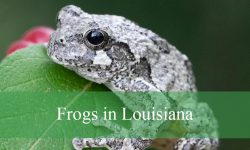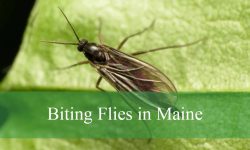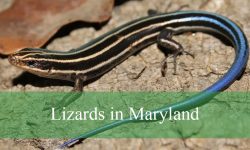Ohio’s varied environment of forests, fields, and wetlands is home to countless insects, some of which can be harmful to people and pets. While many play important roles in nature, a few species can bite, sting, or spread disease.
From the notorious Black Widow Spider to ticks that carry Lyme disease and aggressive hornets defending their nests, encounters with these insects can quickly become unpleasant. Recognizing them helps you stay alert and avoid risky situations.
This article explores 16 of the most dangerous bugs found in Ohio. You will learn how to identify each species, understand their habitats and behavior, and know how to protect yourself and your family from potential harm.
Types of Dangerous Bugs Found in Ohio
Black-legged Tick (Ixodes scapularis)
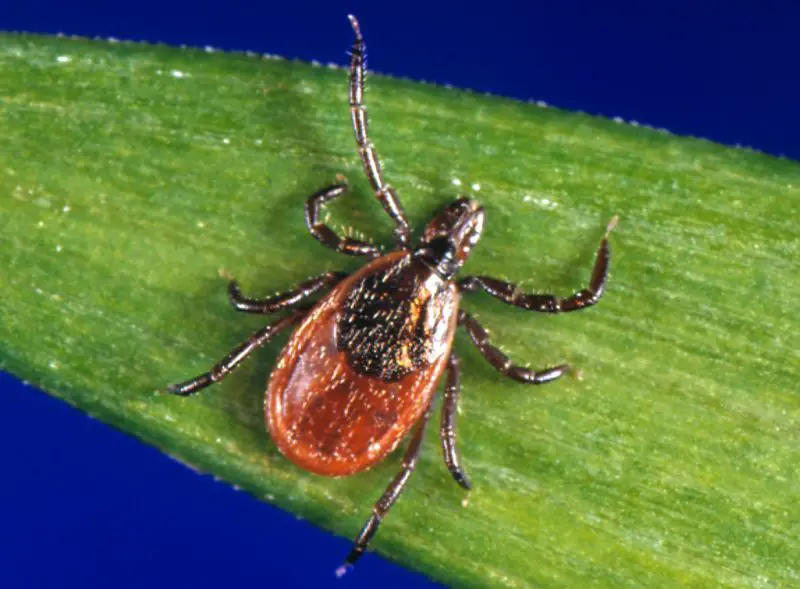
The Black-legged Tick, also known as the Deer Tick, is the primary carrier of Lyme disease in Ohio. It is a small arachnid—adult females are about 3 mm long (about the size of a sesame seed), while males are slightly smaller. Females have a reddish-orange body with a black dorsal shield, while males appear uniformly dark brown or black. When engorged with blood, the female’s body can expand up to 10 mm.
These ticks are common in wooded and grassy areas, particularly where deer and small mammals live. In Ohio, they are most active during the spring and fall but can be encountered year-round in warmer conditions. They do not jump or fly but climb vegetation and wait for hosts to brush past—a behavior known as “questing.”
The primary threat from the Black-legged Tick is its ability to transmit Borrelia burgdorferi, the bacterium that causes Lyme disease. After feeding for 24–48 hours, the bacteria can enter the host’s bloodstream. Early symptoms of infection include a circular “bull’s-eye” rash, fever, and fatigue, which can progress to joint pain, nerve damage, and heart complications if untreated.
Ticks prefer attaching to warm, soft areas such as the scalp, armpits, or groin. Removal should be done carefully with tweezers, grasping close to the skin and pulling straight out to avoid leaving mouthparts embedded.
To prevent bites, Ohio residents should use insect repellent containing DEET or permethrin, wear long sleeves and pants when hiking, and perform thorough tick checks after spending time outdoors. Clearing tall grasses and keeping yards tidy reduces tick habitats significantly.
Black Widow Spider (Latrodectus mactans)
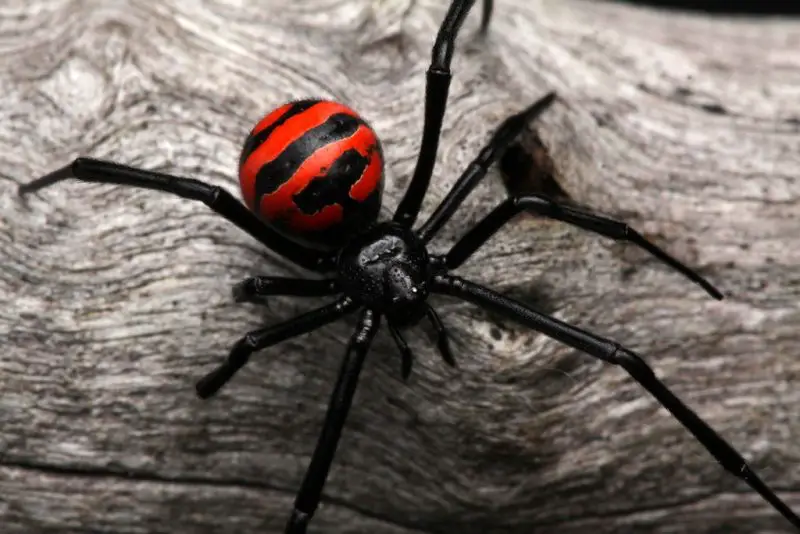
The Black Widow Spider is considered the most venomous spider in Ohio and one of the most feared across North America. Females are easily recognized by their shiny black bodies and the distinctive red hourglass marking on the underside of their abdomen. Males are smaller and lighter in color, often brownish with faint markings, and are not dangerous to humans. Adult females typically measure about 1.5 inches (38 mm) including the leg span, while males are less than half that size.
In Ohio, Black Widows are more common in the southern and central regions, especially in dark, undisturbed areas such as garages, woodpiles, crawl spaces, and basements. They prefer warm environments and are often found near human dwellings where prey like flies and beetles are abundant. They spin irregular, messy webs close to the ground and typically hang upside down when waiting for prey.
These spiders are generally non-aggressive and only bite when threatened or trapped against the skin. Their venom is a potent neurotoxin called latrotoxin, which affects the nervous system. Symptoms from a bite include intense pain, muscle cramps, nausea, and sweating within minutes. Severe cases can lead to difficulty breathing and increased blood pressure.
Although fatalities from Black Widow bites are extremely rare today due to modern medical care, the bites require prompt attention. Antivenom is available, and treatment typically focuses on pain control and muscle relaxation. Children, the elderly, and people with pre-existing conditions are at the highest risk of serious complications.
To prevent encounters, Ohio residents are advised to wear gloves when handling firewood or debris, shake out boots and clothing left outdoors, and reduce clutter in storage areas. Keeping outdoor areas clean and dry can also minimize their habitat and prevent infestations.
Brown Recluse Spider (Loxosceles reclusa)
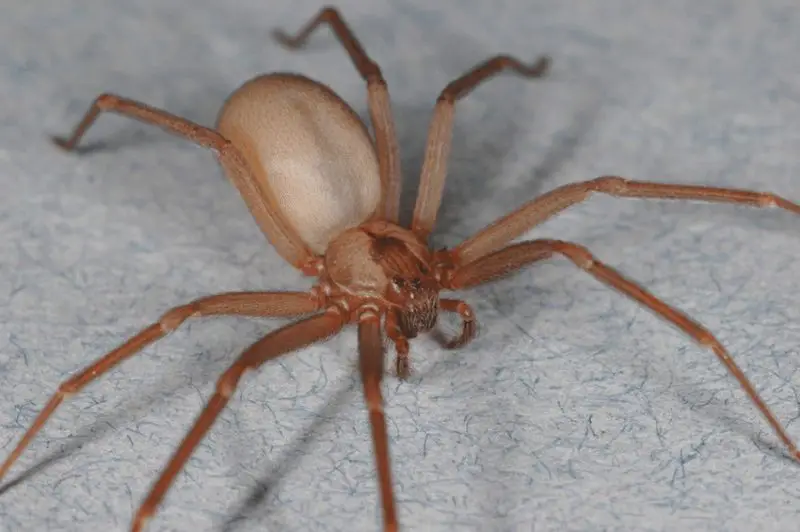
The Brown Recluse Spider is among the most medically significant spiders in the United States, though it is rare in Ohio. Adults measure about 0.25 to 0.5 inches (6–12 mm) in body length, with a leg span up to an inch. Its most distinctive marking is the dark, violin-shaped pattern on its back, with the neck of the “violin” pointing toward the abdomen. Unlike most spiders, the Brown Recluse has only six eyes arranged in pairs, which helps in identification.
This species prefers dry, sheltered environments such as attics, basements, sheds, and behind furniture. Outdoors, they hide under logs, rocks, or piles of wood. They are nocturnal hunters that feed on small insects, and they rarely spin webs to catch prey. In Ohio, reports of confirmed Brown Recluse populations are uncommon, but isolated specimens have been found in southern parts of the state.
Despite its secretive nature, the Brown Recluse’s venom is extremely dangerous. It contains enzymes that destroy cell membranes, causing local tissue necrosis (death of skin and muscle tissue). A bite may start as a mild stinging sensation but can develop into a large, ulcerating wound within hours or days. Severe reactions include fever, nausea, and fatigue.
Medical attention is essential for any suspected bite. Treatment involves wound care, pain relief, and in severe cases, surgical removal of dead tissue. Though deaths are very rare, the bites can result in permanent scarring if left untreated.
The best prevention in Ohio homes is sealing cracks, reducing clutter, and storing clothing or shoes off the floor. Using sticky traps in basements and attics can also help monitor their presence.
American Dog Tick (Dermacentor variabilis)
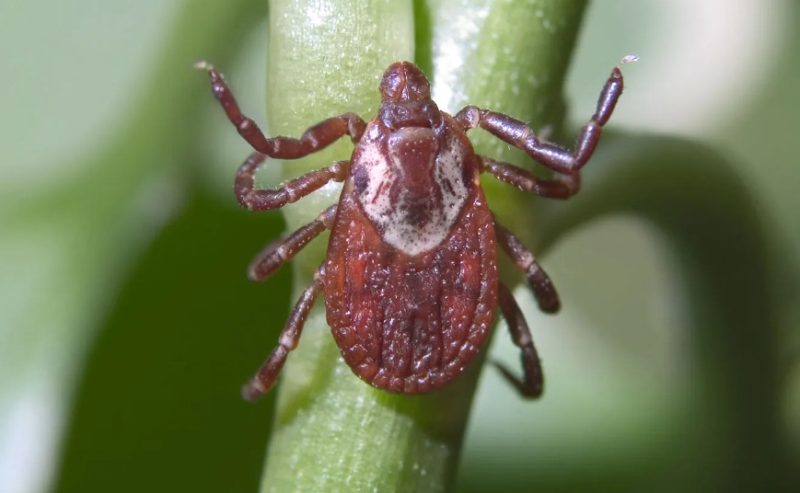
The American Dog Tick is one of the most widespread tick species in Ohio and a known vector for Rocky Mountain Spotted Fever and Tularemia. Adult ticks are larger than deer ticks, with females measuring about 5 mm before feeding and up to 15 mm when engorged. They have distinctive white or silver markings on their reddish-brown bodies, which make them easy to identify.
They thrive in grassy fields, forest edges, and along hiking trails—especially where domestic or wild animals frequent. In Ohio, they are most active from late spring through early summer. Unlike the Black-legged Tick, the American Dog Tick prefers larger mammals such as dogs, raccoons, and humans as hosts.
Their bites themselves are not painful, but the risk of disease transmission is significant. Rocky Mountain Spotted Fever is a bacterial illness that can cause fever, headache, rash, and in severe cases, organ failure. Tularemia is another infection transmitted by this species, leading to skin ulcers and swollen lymph nodes.
Ticks attach firmly to the host’s skin and feed for several days. Removing them quickly and completely greatly reduces the risk of infection. Disinfecting the bite area and monitoring for symptoms within two weeks is highly recommended.
Preventive measures include using tick repellents, checking pets regularly, and maintaining short grass in yards and recreational areas. Ohio’s warmer summers have extended their active season, making awareness increasingly important for outdoor enthusiasts.
Saddleback Caterpillar (Acharia stimulea)
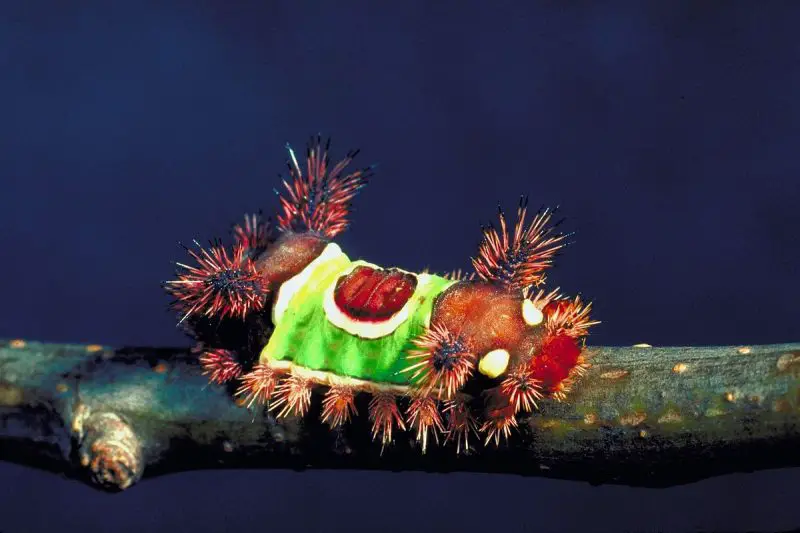
The Saddleback Caterpillar is one of Ohio’s most visually striking yet dangerous caterpillars. It is easily recognized by its bright green “saddle” marking on the back, surrounded by brown ends and a white border. The body is covered in venomous spines that resemble tiny horns, capable of delivering a painful sting upon contact. Adult larvae reach about 1 inch (25 mm) in length.
These caterpillars inhabit forests, gardens, and landscaped areas throughout Ohio during late summer and early fall. They feed on a wide range of plants, including oak, elm, apple, corn, and ornamental shrubs. They are often found on the undersides of leaves where they are well camouflaged, making accidental contact likely during gardening or yard work.
The venom is injected through hollow spines connected to toxin glands. Contact results in immediate burning pain, redness, swelling, and sometimes nausea or headaches. The reaction can last several hours, and in rare cases, people may experience systemic allergic responses such as difficulty breathing or dizziness.
Though not life-threatening for most individuals, the sting from a Saddleback Caterpillar is extremely unpleasant. Applying adhesive tape to remove spines, followed by washing the area and using ice packs, can help relieve symptoms. Severe reactions may require antihistamines or medical attention.
To prevent encounters, Ohio residents should wear gloves and long sleeves while gardening and inspect leaves carefully before handling plants. Since this species can appear in suburban backyards, awareness is the best defense against painful accidents.
Io Moth Caterpillar (Automeris io)
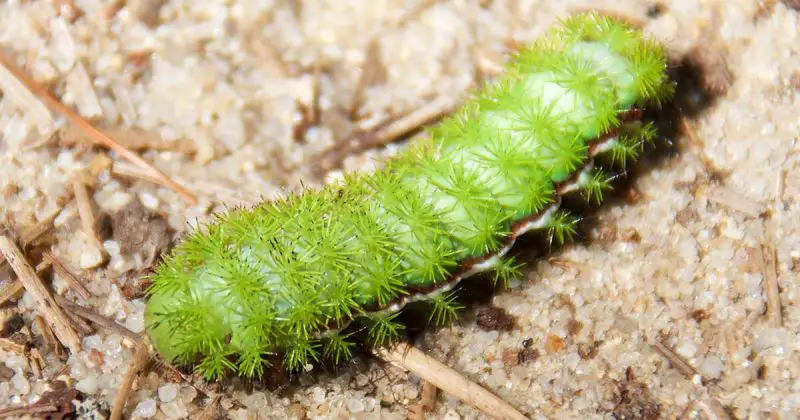
The Io Moth Caterpillar is one of Ohio’s most striking yet dangerous caterpillars due to its venomous spines. This larval stage of the beautiful Io Moth is covered in clusters of bright green spines tipped with red or black, and a pale stripe runs along each side of the body. Fully grown larvae can reach up to 2.5 inches (6 cm) long and are easy to spot because of their vivid color and bristled texture.
These caterpillars can be found across Ohio during summer and early fall, feeding on a wide range of host plants including willow, elm, oak, maple, and corn. They are most commonly seen in wooded areas, gardens, and agricultural fields where their preferred vegetation grows. Their camouflage helps them blend with foliage, making accidental contact with gardeners or hikers common.
When touched, the sharp spines inject venom that causes immediate stinging pain, burning, and redness. The affected area may swell and develop an itchy rash that lasts for several hours or even days. In sensitive individuals, systemic reactions such as nausea or lightheadedness may occur, though these are rare.
The toxin acts as a defensive mechanism against predators such as birds and small mammals. While not life-threatening, the sting from an Io Moth Caterpillar is significantly painful and can lead to secondary infections if scratched excessively.
For treatment, adhesive tape can be used to remove embedded spines, followed by washing the area with soap and water. Applying ice and antihistamines helps reduce inflammation. Wearing gloves when handling plants during caterpillar season is a smart precaution in Ohio’s gardens and parks.
Velvet Ant (Dasymutilla occidentalis)
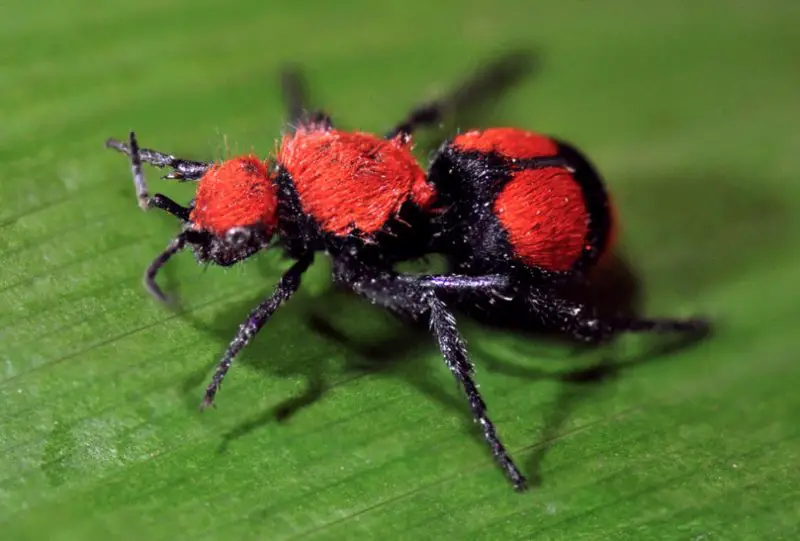
Despite its name, the Velvet Ant is actually a type of wingless wasp rather than a true ant. Covered in dense orange-red hair with a velvety appearance, it’s one of the most striking insects in Ohio. Females are wingless, while males have wings but do not sting. Their bright coloration serves as a warning to predators.
Velvet Ants are most often found in dry, sandy areas such as fields, meadows, and open woodlands. They move quickly along the ground in search of bee or wasp nests, where females lay their eggs. The larvae then develop as parasites inside the host larvae, eventually consuming them.
The sting of a female Velvet Ant is notoriously painful, earning it the nickname “cow killer.” Although the sting can cause intense, burning pain and localized swelling, it is not fatal to humans. Most people recover without medical treatment, but allergic individuals should seek help if they experience severe reactions.
Their behavior is generally non-aggressive. Velvet Ants will sting only when handled or threatened. Observing them from a distance is the safest approach.
While these insects contribute to controlling other wasp populations, their sting makes them one of the most feared bugs in Ohio. Recognizing their bright coloration and avoiding contact is the best way to stay safe outdoors.
Yellowjackets (Vespula spp.)
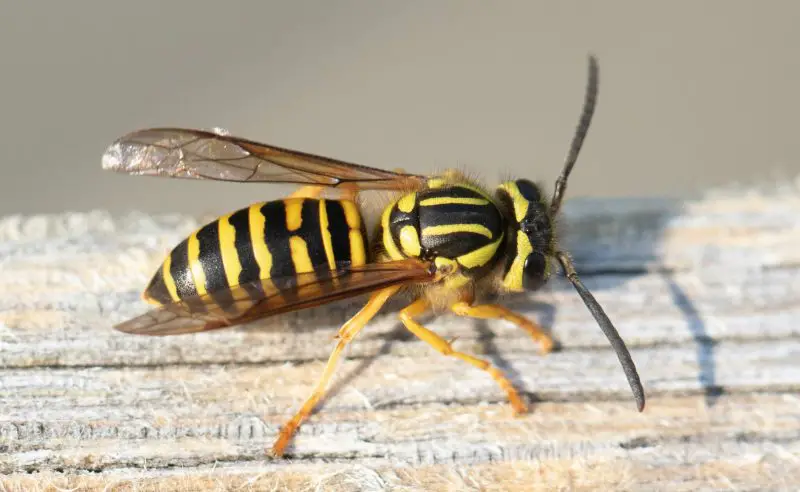
Yellowjackets are among the most aggressive stinging insects in Ohio, responsible for the majority of stings during late summer and early fall. They are small, black-and-yellow wasps, typically about 0.5 inches (12 mm) long, with smooth bodies and quick, darting flight patterns. Their sleek shape and bright coloration make them easy to distinguish from the fuzzier honeybee.
These wasps build large paper nests underground, inside hollow trees, or within wall voids and attics. Colonies can contain thousands of workers by late summer, making them particularly defensive during that time. In Ohio, they thrive in suburban and rural areas where food sources such as sugary drinks, meat, and garbage are abundant.
Yellowjackets sting repeatedly and inject venom that causes immediate pain, swelling, and redness. Unlike bees, they do not lose their stinger after attacking. Most stings heal quickly, but individuals allergic to their venom can experience anaphylaxis — a potentially life-threatening reaction with symptoms such as difficulty breathing, dizziness, and swelling of the face or throat.
Their aggressive nature is often triggered by disturbance of their nest or rapid movement near food sources. Once one Yellowjacket stings, it releases pheromones that attract others, leading to multiple stings in seconds.
To reduce encounters in Ohio, keep food covered outdoors, seal trash bins tightly, and locate nests early in the season before colonies grow large. Professional pest control should handle any nests found close to human activity, as Yellowjackets defend their territory fiercely.
Bald-faced Hornet (Dolichovespula maculata)
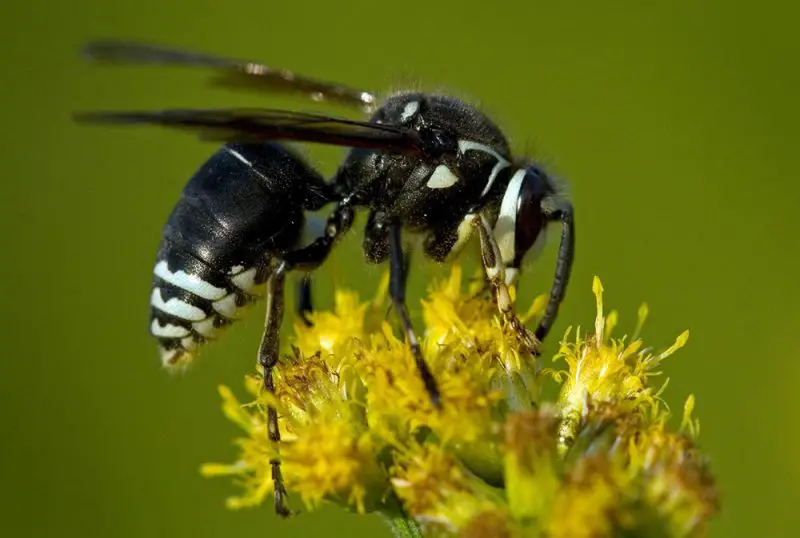
The Bald-faced Hornet, despite its name, is actually a large type of yellowjacket. It is easily recognized by its black body with striking white markings on the face and abdomen. Adults typically measure between 0.75 and 1 inch (19–25 mm), making them one of the largest stinging insects in Ohio. Their loud, buzzing flight and bold coloration serve as a clear warning to stay away.
This hornet builds large, gray, football-shaped paper nests, often suspended high in trees, shrubs, or under eaves of buildings. Each colony can contain up to 700 workers by late summer. Bald-faced Hornets are common throughout Ohio, favoring wooded areas, suburban gardens, and parks. They feed on live insects, nectar, and sugary liquids, playing a role in natural pest control.
While generally not aggressive when foraging, these hornets become extremely defensive when their nest is approached. Their sting delivers a potent venom that causes intense burning pain, redness, and swelling. Some individuals experience allergic reactions, and multiple stings can be medically significant due to the large volume of venom injected.
The venom contains acetylcholine and other compounds that trigger inflammation and pain almost instantly. Unlike honeybees, Bald-faced Hornets can sting multiple times without losing their stinger, making them especially dangerous in swarm attacks.
To prevent stings, Ohio residents should avoid loud vibrations or lawn work near visible nests and contact professionals to remove them. Despite their threat, these hornets are beneficial predators of flies and other pest insects in natural ecosystems.
Paper Wasps (Polistes spp.)
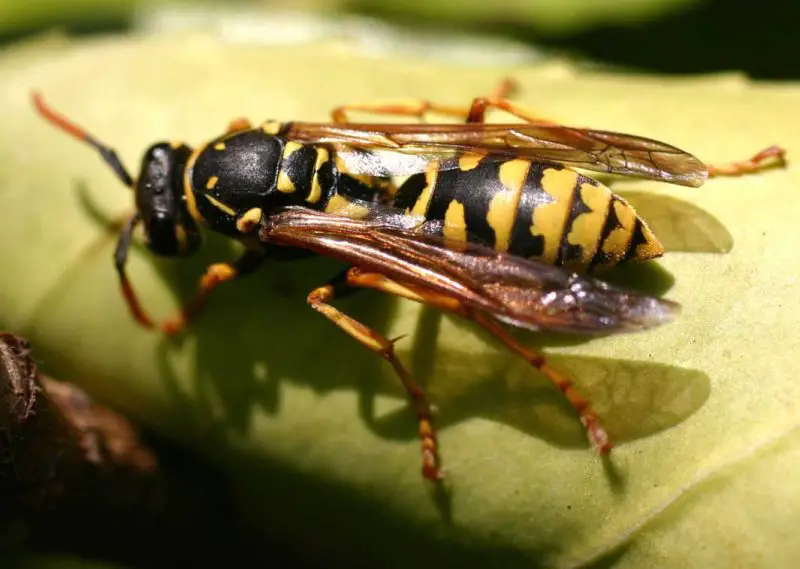
Paper Wasps are slender, long-legged insects that measure about 0.75 to 1 inch (19–25 mm) in length. Their bodies are often reddish-brown, black, or yellow with thin waists and dangling legs in flight. They are less stocky than Yellowjackets and are usually non-aggressive unless their nests are disturbed.
Paper Wasps construct open, umbrella-shaped nests made of chewed wood pulp mixed with saliva. These nests are commonly found under eaves, porch ceilings, fences, and branches. In Ohio, they appear from spring through late summer, with small colonies typically numbering fewer than 100 individuals.
Their sting causes sharp pain and swelling, similar to a bee sting but often more prolonged. While most stings heal without complication, allergic individuals may experience severe reactions requiring emergency treatment. Because they can sting repeatedly, even minor disturbances near their nests should be avoided.
Paper Wasps play a positive ecological role by feeding on caterpillars and other pest insects. They are active pollinators as well, visiting flowers for nectar. However, their proximity to human homes increases the risk of accidental encounters, especially in late summer when colonies are at their peak.
Preventive measures include checking for small nests early in the season and removing them before colonies grow. In Ohio’s residential areas, sealing porch gaps and minimizing food residues near outdoor dining spaces can significantly reduce their attraction.
Mosquitoes (Aedes & Culex spp.)
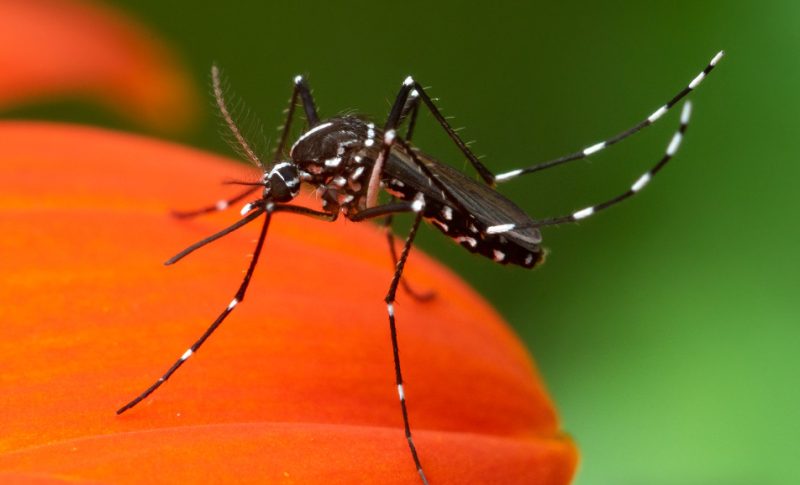
Mosquitoes are among the most widespread and persistent biting insects in Ohio. Adult mosquitoes are small, ranging from 3 to 6 mm, with long, thin legs and a needle-like proboscis used for piercing skin and drawing blood. Only females bite, as they require blood proteins to produce eggs, while males feed on plant nectar.
In Ohio, the most common disease-carrying species belong to the Aedes and Culex genera. Culex pipiens, the northern house mosquito, is known to transmit West Nile virus, while Aedes triseriatus can spread La Crosse encephalitis. These mosquitoes breed in standing water — from ponds and birdbaths to clogged gutters and old tires — and are most active from late spring to early fall.
Mosquito bites cause itching, redness, and swelling, but the greater danger lies in disease transmission. West Nile virus infections can lead to high fever, neurological damage, and, in severe cases, death. La Crosse encephalitis primarily affects children and may cause long-term brain inflammation.
Ohio’s humid summers and rainfall create ideal mosquito breeding conditions. Their peak activity occurs at dawn and dusk when temperatures are mild and wind speeds low. These insects locate hosts by detecting carbon dioxide, body heat, and scent from several feet away.
To reduce mosquito populations, residents should regularly empty containers holding stagnant water, install screens on windows, and use repellents containing DEET or picaridin. City-wide vector control programs in Ohio also target breeding grounds with larvicides to reduce infection risks.
Kissing Bug (Triatoma sanguisuga)
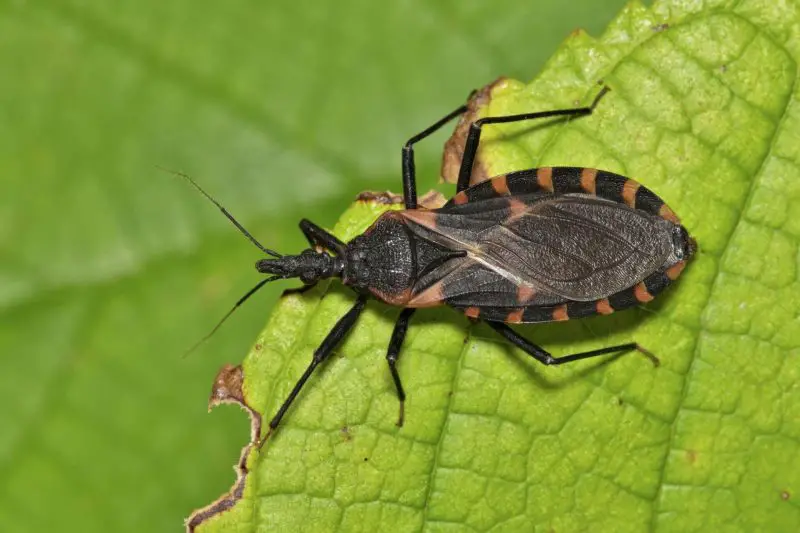
The Kissing Bug (Triatoma sanguisuga) is a nocturnal blood-feeding insect recognized for its elongated, cone-shaped head and distinct red or orange edging along the sides of its dark brown to black body. Measuring about 0.7 to 1 inch (1.8–2.7 cm) long, it uses its long, piercing proboscis to feed on the blood of mammals, including humans, while they sleep.
In Ohio, Kissing Bugs are rare but can occasionally be found near animal nests, under porches, or around homes with cracks and gaps that allow entry. They are often drawn to lights at night and may inadvertently enter homes through open windows or doors.
Their nickname “Kissing Bug” comes from their habit of biting people around the lips or eyes as they sleep. The bite is usually painless at first but can cause redness, swelling, and itching afterward. Some individuals experience stronger allergic reactions with noticeable welts or rashes.
The main health concern associated with Triatoma sanguisuga is its potential to carry the parasite Trypanosoma cruzi, which causes Chagas disease—a serious illness affecting the heart and digestive system. Fortunately, confirmed cases of transmission in Ohio are extremely rare due to the low prevalence of the parasite in the region.
Despite the low disease risk, Kissing Bugs are still considered hazardous because their bites can cause skin irritation, allergic responses, and in rare cases, secondary infections. Sealing home entry points and minimizing outdoor lights can help reduce the chance of encountering them.
Blister Beetles (Epicauta spp.)
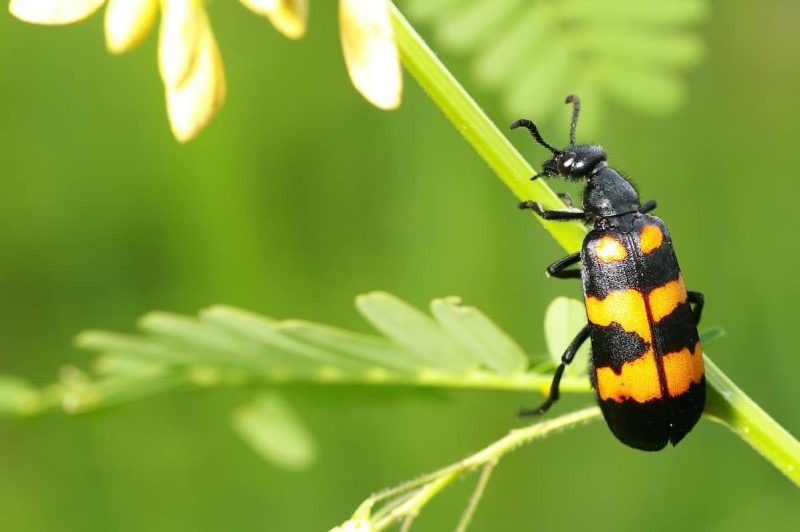
Blister Beetles (Epicauta spp.) are slender, soft-bodied beetles measuring between 0.4 and 1 inch (1–2.5 cm) long. They can vary in color—black, gray, brown, or even bright orange and yellow—depending on the species. A narrow “neck” separates their head from the thorax, and their soft elytra (wing covers) give them a smooth, flexible appearance.
In Ohio, they are commonly seen during late spring and summer in fields, meadows, and gardens, often feeding on the leaves and flowers of crops like alfalfa, soybeans, and potatoes. While adult beetles feed on vegetation, their larvae are beneficial predators that consume grasshopper eggs and other insect larvae.
The danger posed by Blister Beetles lies in their secretion of cantharidin, a toxic compound that causes skin blistering and severe irritation upon contact. Even a light touch can lead to painful welts or rashes, and ingestion—such as consuming contaminated hay or vegetables—can result in poisoning in both humans and livestock.
Cantharidin poisoning symptoms include nausea, abdominal pain, and urinary irritation. In horses and cattle, even small amounts can be fatal, which is why hay from infested fields must be carefully inspected before feeding.
Though they do not bite or sting, Blister Beetles are considered dangerous due to the potency of their chemical defense. Wearing gloves when gardening or handling infested plants is strongly recommended to avoid accidental contact with their toxic secretion.
Assassin Bug (Wheel Bug – Arilus cristatus)
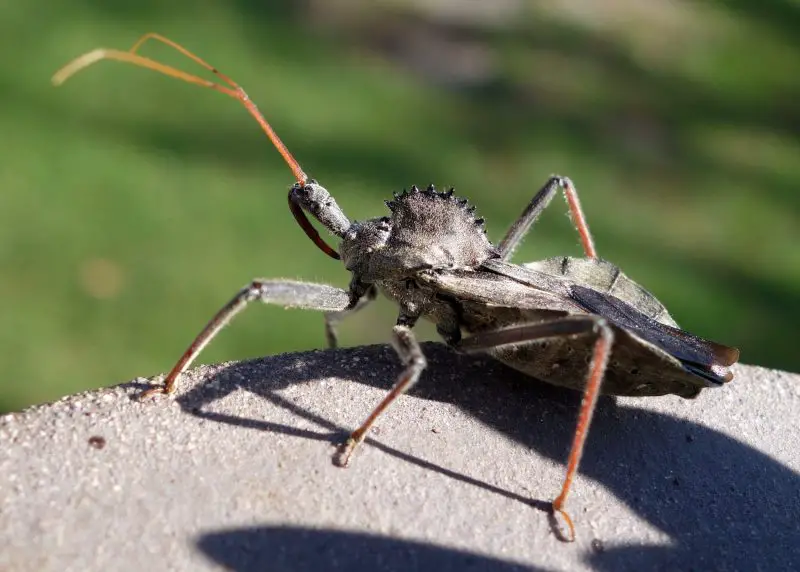
The Wheel Bug (Arilus cristatus) is one of the largest and most intimidating assassin bugs found in Ohio. It can grow up to 1.25 inches (3 cm) long and is easily recognized by the cogwheel-shaped crest on its thorax, giving it the appearance of a small mechanical creature. Its grayish-brown body and long, curved proboscis make it a formidable insect predator.
Wheel Bugs inhabit wooded areas, gardens, and fields where they hunt other insects such as caterpillars, beetles, and aphids. They are beneficial to farmers and gardeners since they help control pest populations. Despite their usefulness, they can deliver one of the most painful insect bites in North America.
When threatened or mishandled, the Wheel Bug uses its strong proboscis to pierce human skin, injecting enzymes that cause immediate, burning pain. The bite site often swells, reddens, and remains sore for several days. Unlike Kissing Bugs, however, Wheel Bugs do not transmit any diseases.
In Ohio, they are most active from late spring through fall, especially in areas with abundant insect prey. They are slow-moving and not aggressive but will defend themselves if disturbed. Their quiet nature often leads to accidental encounters during outdoor work or gardening.
Although not venomous in the medical sense, their bite can cause intense discomfort and sometimes leave a small scar. Observing them from a distance is safest, as they play an important ecological role in balancing insect populations.
Fire Ants (Solenopsis invicta)
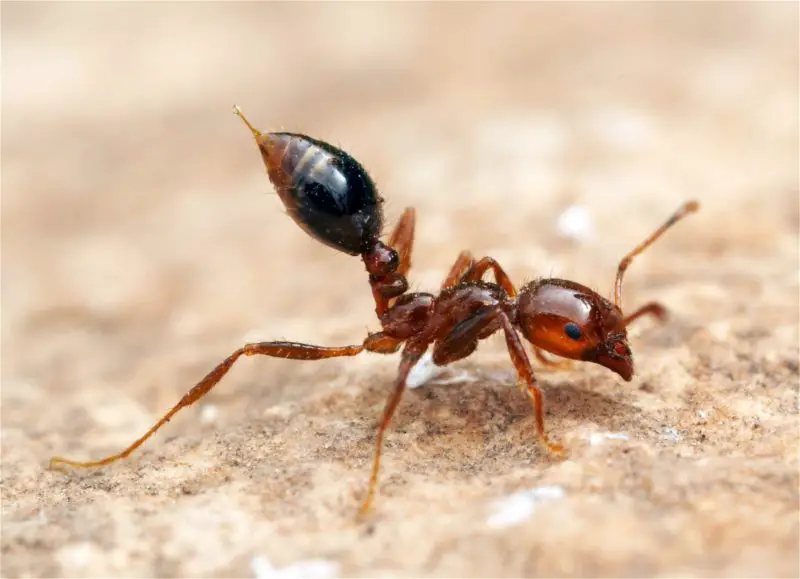
Fire Ants (Solenopsis invicta) are small, reddish-brown ants ranging from 1/16 to 1/4 inch (1.5–6 mm) in length. These invasive ants are notorious for their aggressive behavior and painful stings. While they are not yet widespread in Ohio, their populations have been slowly expanding northward from southern states.
Fire Ant colonies are typically found in sunny, open areas such as lawns, fields, and along roadsides. Their large mounds—often over a foot wide—can appear after rain. When the nest is disturbed, worker ants swarm rapidly and sting in unison, injecting a venomous alkaloid that causes a burning sensation.
The sting of a Fire Ant results in sharp pain, followed by itching, swelling, and the formation of pus-filled blisters. For some individuals, especially those allergic to insect venom, stings can trigger severe reactions such as dizziness, difficulty breathing, or anaphylaxis requiring immediate medical care.
These ants feed on both plant and animal matter, scavenging dead insects, seeds, and food scraps. Their aggressive nature allows them to outcompete native ants, posing ecological as well as medical risks.
In Ohio, Fire Ants remain uncommon, but their gradual movement northward means vigilance is crucial. People encountering large, aggressive ant mounds should avoid contact and report infestations to local pest management authorities.
Horseflies (Tabanus spp.)
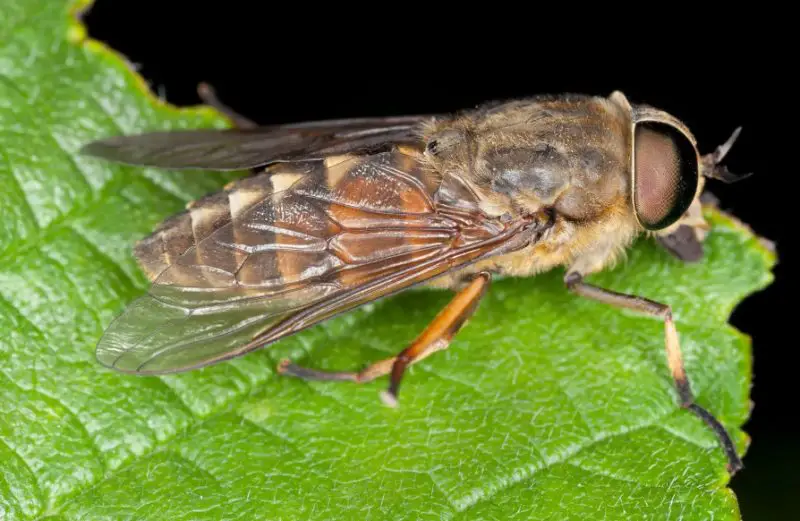
Horseflies (Tabanus spp.) are large, fast-flying insects ranging from 0.5 to 1.25 inches (1.3–3.2 cm) in length, easily recognized by their massive green or purple eyes and robust bodies. Females possess sharp, blade-like mouthparts designed to slice through skin and feed on blood, while males feed mainly on nectar.
These flies are common across Ohio during the warm summer months, especially near wetlands, ponds, and pastures. They are powerful fliers that are drawn to movement, dark colors, and the carbon dioxide exhaled by animals and humans.
A Horsefly bite is extremely painful—comparable to a sharp cut—and often results in bleeding, swelling, and prolonged itching. Because they tear the skin rather than pierce it, their bites can easily become infected if not cleaned properly.
In addition to causing discomfort, Horseflies can transmit pathogens and parasites among livestock, such as Trypanosoma and Anaplasma species, which can lead to diseases in cattle and horses. Though human disease transmission is rare in Ohio, secondary infections from scratching are common.
Horseflies are among the most troublesome biting insects for outdoor enthusiasts and farmers alike. Protective clothing, insect repellents, and avoiding peak activity times (hot, humid days) are the best ways to minimize encounters with these persistent biters.
FAQs about Dangerous Bugs in Ohio
What is the most dangerous bug in Ohio?
The Black Widow Spider (Latrodectus mactans) is considered the most dangerous bug in Ohio. Its venom is highly neurotoxic and can cause severe muscle pain, cramping, sweating, and nausea. While fatalities are extremely rare, immediate medical attention is strongly advised after a bite.
Can the Brown Recluse Spider be found in Ohio?
Yes, the Brown Recluse Spider (Loxosceles reclusa) can occasionally be found in southern Ohio, though it’s less common than in the southern U.S. Its bite can lead to tissue necrosis and infection, requiring medical care. These spiders prefer dark, undisturbed areas such as basements or attics.
Do ticks in Ohio carry diseases?
Absolutely. Black-legged Ticks (Ixodes scapularis) can transmit Borrelia burgdorferi, the bacteria responsible for Lyme disease. American Dog Ticks (Dermacentor variabilis) may spread Rocky Mountain Spotted Fever. Checking your skin after outdoor activities is crucial to prevent infection.
Are mosquito bites in Ohio dangerous?
Yes, some mosquitoes in Ohio—especially Aedes and Culex species—can carry viruses like West Nile Virus and La Crosse Encephalitis. These diseases can cause fever, fatigue, and in severe cases, neurological complications. Using repellents and wearing protective clothing can greatly reduce risk.
What should I do if stung by a Yellowjacket or Hornet?
If stung by a Yellowjacket or Bald-faced Hornet, clean the wound and apply a cold compress to reduce swelling. Individuals allergic to stings should use an epinephrine injector if available and seek emergency care immediately, as severe allergic reactions can be life-threatening.
How can I identify a Kissing Bug?
The Kissing Bug (Triatoma sanguisuga) has a flat, elongated body with orange-red markings along its sides. It often bites around the mouth or eyes at night. Although rare in Ohio, it can carry the parasite Trypanosoma cruzi, which causes Chagas disease in Latin America.
Are Fire Ants really found in Ohio?
While not native to Ohio, Fire Ants (Solenopsis invicta) have slowly been expanding northward. Their sting is painful, forming white pustules that can become infected. People allergic to insect venom should exercise caution if traveling to infested areas.
Do caterpillars in Ohio have venom?
Yes. The Saddleback Caterpillar (Acharia stimulea) and Io Moth Caterpillar (Automeris io) have venomous spines that cause burning pain, redness, and swelling. It’s best to avoid touching brightly colored or spiny caterpillars with bare hands.
Can Blister Beetles harm humans?
Yes, Blister Beetles (Epicauta spp.) release a toxic substance called cantharidin that causes painful skin blisters and burns. Ingesting contaminated food or hay can be extremely toxic to both humans and livestock.
How can I avoid dangerous bugs in Ohio?
To reduce encounters, keep your yard trimmed, wear long sleeves and pants in wooded areas, use insect repellent with DEET, and seal cracks around your home. Avoid disturbing insect nests or webs, and always inspect your pets for ticks after spending time outdoors.

